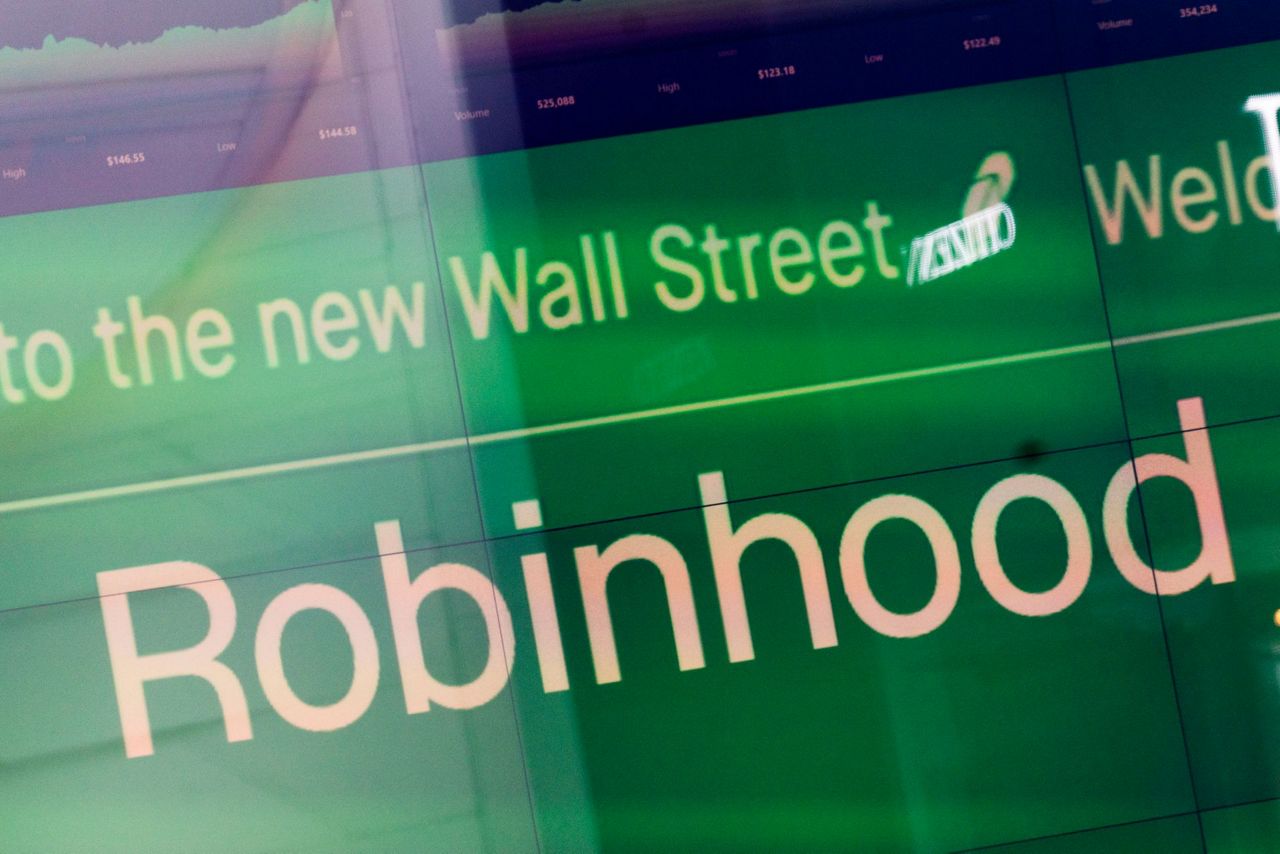NEW YORK (AP) — Growth slammed into reverse at the start of this year for Robinhood Markets, whose trading app has turned millions of people into investors for the first time.
The company said Thursday that it took in $299 million in revenue during the first three months of the year, down 43% from a year earlier. It also reported a loss of $392 million, or 45 cents per share, as its number of active users shrank amid a wave of worries weighing on stock and cryptocurrency markets.
Both a drop in revenue and a net loss were expected for the quarter. But the results were worse than Wall Street analysts had forecast: a loss of 38 cents per share on revenue of $354.6 million, according to FactSet.
Growth has been flagging for Robinhood since a powerful surge during the early part of the pandemic, through the first half of 2021. At its height, Robinhood's revenue growth was probably impossible to replicate, and it has been decelerating steadily since hitting 309% at the start of 2021. Robinhood's most fantastic growth was largely because of maniacal trading for GameStop, dogecoin and other market-bending phenomena unlikely to be repeated.
Robinhood’s business does best when people use its app to trade often, whether it’s stocks or crypto, because it makes money by routing their orders to market makers and big trading firms. Company executives told investors Thursday that the market volatility last quarter pushed casual investors away, or made them more cautious and less likely to do large trades.
Other factors that got people trading often early in the pandemic — including restrictions keeping people at home, stimulus checks giving them cash to spend and low interest rates helping prices soar for all kinds of markets — have also faded.
Revenue earned from the trading of stocks on Robinhood’s app dropped 73% during the first quarter from a year earlier. The company makes more money from the trading of options and of crypto, and revenue there fell 36% to 39%. The company said it no longer planned to give quarterly revenue guidance, saying the volatile markets had made it much more difficult to predict.
Trading has become tougher this year as markets fall due to a range of worries. Chief among them is a sudden surge in interest rates as the Federal Reserve fights to beat down high inflation.
The S&P 500 fell 4.9% during the first three months of the year for its first losing quarter since the pandemic-induced crash of early 2020. The losses have continued in April, with many of the Big Tech stocks popular among younger investors turning in some of the worst performances.
Robinhood’s own stock has struggled this year, recently falling below $10 after briefly touching $85 shortly after its stock’s debut on the Nasdaq in the summer of 2021. It rose 6.1% Thursday to close at $10.09, before Robinhood’s results came out.
Following the release of the results, the stock fell 11.2% in afterhours trading.
Analysts focused their questions on Robinhood's plans for growth. The company has announced several new products in recent months, including additional cryptocurrencies for trade as well as a new debit card. Analysts seemed doubtful that these myriad of new products would actually result in new revenue for the company.
Robinhood earlier this week said it would cut 9% of its workforce. CEO Vlad Tenev said the company wanted to cull duplicative jobs after its number of employees soared to nearly 3,800 from 700 in 2019.
The company grew its headcount so quickly in part to keep up with its explosion of users, and it attracted more in early 2022. Robinhood said it had 22.8 million cumulative funded accounts at the end of March, up 27% from a year earlier.
But fewer customers were actively using Robinhood's services during the quarter. Its number of monthly active users dropped 10% to 15.9 million in March from a year earlier. It also fell 8% from December.
“We’re seeing our customers affected by the macroeconomic environment, which is reflected in our results this quarter,” Robinhood Chief Financial Officer Jason Warnick said in a statement. “At the same time, we’ve also made progress on our long-term plans and continue to pursue them aggressively.”
Wall Street is looking for Robinhood’s losses to continue to moderate, and it’s forecasting year-over-year growth in revenue may return in the second half of this year. That’s when Robinhood’s numbers will no longer be compared against the booms generated by GameStop and dogecoin from early 2021.
Copyright 2022 The Associated Press. All rights reserved. This material may not be published, broadcast, rewritten or redistributed without permission.


